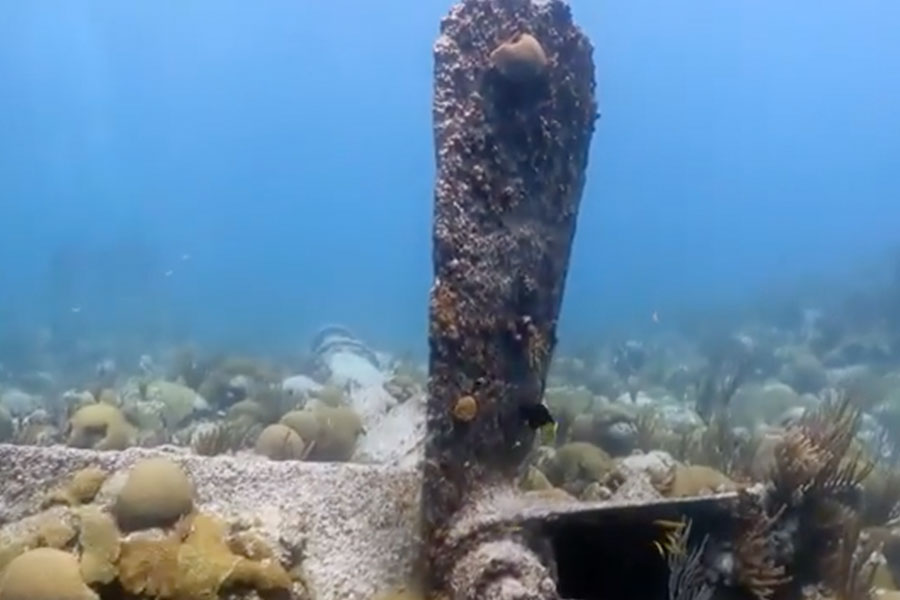Built in 1874 in Whitby, England, the Kate was an iron-hulled English “Barkantine” rig, or steam freighter. She was en route from Galveston, Texas to Le Havre, France with a load of cotton when she struck an unmapped reef 22 miles northwest of Bermuda’s Gibbs Hill Lighthouse and collided with Long Bar on November 30, 1878. As the ship began taking on water, Captain James Simpson signaled for help, and a tug boat towed and grounded her on the south shore to prevent the Kate from sinking (or to help in the salvage of her cargo of cotton). Nearly all of the more than 3,600 bales of cotton cargo were saved, and no lives were lost. Nearly two weeks later, on December 10, a gale broke her up further and pushed the Kate into deeper water. Captain Simpson was found at fault and his license revoked.
CURRENT CONDITION
Today the Kate lies in 45 feet of water almost one kilometer from the private Natural Arches Beach on Bermuda’s south shore. Her engine, propeller shaft, deck winches and boilers remain visible, and the massive boiler reefs create swim-throughs, tunnels and overhangs. Follow the boilers to the east and a diver arrives in a huge cavern with many openings; the water moving in and out of the cavern creates the illusion of the inside of a giant washing machine. The propeller separated from the other parts and can be found on top of the reef in 20 feet of water – a popular attraction for snorkelers. The Kate’s huge anchor sits slightly upright on top of the reef south of the main wreckage. The wreck was never lost and was always known as a fishing site.
STATISTICS
Location: 32°19'38.00"N, 64°41'8.00"W Length: 200 feet (61 meters) Maximum Depth: 45 feet (13.7 meters) Tonnage: 1,413 tons Protected Area Radius - No Fishing: 300m


